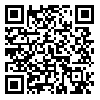Volume 25, Issue 3 (5-2021)
IBJ 2021, 25(3): 213-219 |
Back to browse issues page
Download citation:
BibTeX | RIS | EndNote | Medlars | ProCite | Reference Manager | RefWorks
Send citation to:



BibTeX | RIS | EndNote | Medlars | ProCite | Reference Manager | RefWorks
Send citation to:
Ghanbari E, Gavzan H, Khoshkroodian B, Sayyah M. Anti-Seizure Activity of 1-Adamantane Carboxylic Acid in Common Experimental Seizure Models: Role of Benzodiazepine-GABAA Receptors. IBJ 2021; 25 (3) :213-219
URL: http://ibj.pasteur.ac.ir/article-1-3292-en.html
URL: http://ibj.pasteur.ac.ir/article-1-3292-en.html
Abstract:
Background: Despite introduction of modern antiepileptic drugs, 30% of epileptic patients are still drug resistant. Remarkable three-dimensional spatial structure of 1-Adamantane carboxylic acid (AdCA), yet the simplicity of the molecule, makes AdCA a promising lead compound. Methods: Sedative/motor impairment and 24-h mortality rate of AdCA were determined in mice. Impact of AdCA on (1) threshold and occurrence of clonic seizures induced by pentylenetetrazole (PTZ) in mice, (2) incidence of tonic seizures induced by maximal electroshock (MES) in mice, and (3) incidence of generalized seizures and duration of evoked afterdischarges in amygdala-kindled rats, were determined. The role of benzodiazepine receptors in the AdCA effect on clonic seizure threshold was also assessed. Results: AdCA showed sedative effect (median toxic dose [TD50] = 224.5 [190.2-289.9] mg/kg). Median lethal dose (LD50) = 805.5 (715.2–988.1) mg/kg was obtained for AdCA. The compound increased PTZ seizure threshold from 180 mg/kg (p < 0.05) and also inhibited the incidence of clonic seizures (ED50 = 256.3 [107.4-417.3] mg/kg). AdCA also decreased afterdischarge duration (p < 0.01) and the incidence of generalized seizures (ED50 < 50 mg/kg) in the kindled rats. However, AdCA did not protect mice against tonic seizures induced by MES. The benzodiazepine receptor antagonist flumazenil prevented the increase of seizure threshold by AdCA. Conclusion: AdCA possesses anticonvulsant activity in kindling and PTZ models through the activation of benzodiazepine/GABAA receptors with acceptable therapeutic index.
Type of Study: Full Length/Original Article |
Subject:
Related Fields
References
1. Löscher W. The search for new screening models of pharmacoresistant epilepsy: Is induction of acute seizures in epileptic rodents a suitable approach? Neurochemical research 2017; 42(7): 1926-1938. [DOI:10.1007/s11064-016-2025-7]
2. Gharibi Loron A, Sardari S, Narenjkar J, Sayyah M. In silico screening and evaluation of the anticonvulsant activity of docosahexaenoic acid-like molecules in experimental models of seizures. Iranian biomedical journal 2017; 21(1): 32-39. [DOI:10.18869/acadpub.ibj.21.1.32]
3. Fridman AL, Zalesov VS, Kon'shina LO, Kolobov NA, Dolbilkin K V, Moiseev IK, Mratkhuzina TA, Belyaev PG. Synthesis and physiological activity of some adamantane derivatives. Pharmaceutical chemistry journal 1976; 10: 454-458. [DOI:10.1007/BF00757834]
4. Wanka L, Iqbal K, Schreiner PR. The lipophilic bullet hits the targets: Medicinal chemistry of adamantane derivatives. Chemical reviews 2013; 113(5): 3516-3604. [DOI:10.1021/cr100264t]
5. Löscher W, Schmidt D. Which animal models should be used in the search for new antiepileptic drugs? A proposal based on experimental and clinical considerations. Epilepsy research 1988; 2(3): 145-181. [DOI:10.1016/0920-1211(88)90054-X]
6. Sutula TP, Kotloski RJ. Kindling: A Model and Phenomenon of Eepilepsy. In: Pitkanen A, Buckmaster PS, Galanopoulou AS, Moshe SL, editors. Models of Seizures and Epilepsy. London: Academic Press; 2017. p. 813-826. [DOI:10.1016/B978-0-12-804066-9.00055-9]
7. Bertram E. The relevance of kindling for human epilepsy. Epilepsia 2007; 48 Suppl 2: 65-74. [DOI:10.1111/j.1528-1167.2007.01068.x]
8. Engel J Jr. Introduction to temporal lobe epilepsy. Epilepsy research 1996; 26(1): 141-150. [DOI:10.1016/S0920-1211(96)00043-5]
9. Ahmadiani A, Mandgary A, Sayyah M. Anticonvulsant effect of flutamide on seizures induced by pentylenetetrazole: involvement of benzodiazepine receptors. Epilepsia 2003; 44(5): 629-635. [DOI:10.1046/j.1528-1157.2003.36402.x]
10. Babaie J, Sayyah M, Fard-Esfahani P, Golkar M, Gharagozli K. Contribution of dopamine neuro-transmission in proconvulsant effect of Toxoplasma gondii infection in male mice. Journal of neuroscience research 2017; 95(10): 1894-1905. [DOI:10.1002/jnr.24036]
11. Gavzan H, Sayyah M, Sardari S, Babapour V. Synergistic effect of docosahexaenoic acid on anticonvulsant activity of valproic acid and lamotrigine in animal seizure models. Naunyn schmiedebergs archives pharmacology 2015; 388(10): 1029-1038. [DOI:10.1007/s00210-015-1135-0]
12. Racine RJ. Modification of seizure activity by electrical stimulation: II. motor seizure. Electroencephalography and clinical neurophysiology 1972; 32(3): 281-294. [DOI:10.1016/0013-4694(72)90177-0]
13. Litchfield ST, Wilcoxon F. A simplified method of evaluating dose-effect experiments. Journal of pharmacology and experimental therapeutics 1949; 96(2): 99-113.
14. Lamoureux G, Artavia G. Use of the adamantane structure in medicinal chemistry. Current medicinal chemistry 2010; 17(26): 2967-2978. [DOI:10.2174/092986710792065027]
15. Graf C, Klumpp M, Habig M, Rovina P, Billich A, Baumruker T, Oberhauser B, Bornancin F. Targeting ceramide metabolism with a potent and specific ceramide kinase inhibitor. Molecular pharmacology 2008; 74(4): 925-932. [DOI:10.1124/mol.108.048652]
16. Macdonald RL, Kelly KM. Antiepileptic drug mechanisms of action. Epilepsia 1995; 36 Suppl 2: S2-S12. [DOI:10.1111/j.1528-1157.1995.tb05996.x]
17. Coulter DA, Huguenard JR, Prince DA. Characterization of ethosuximide reduction of low-threshold calcium current in thalamic neurons. Annals neurology 1989; 25(6): 582-593. [DOI:10.1002/ana.410250610]
18. Zoidis G, Papanastasiou I, Dotsikas I, Sandoval A, Gouvea Dos Santos R, Papadopoulou-Daifoti Z, Vamvakides A, Kolocouris N, Felix R. The novel GABA adamantane derivative (AdGABA): design, synthesis, and activity relationship with gabapentin. Bioorganic and medicinal chemistry 2005; 13(8): 2791-2798. [DOI:10.1016/j.bmc.2005.02.030]
19. Löscher W, Schwark WS. Development of tolerance to the anticonvulsant effect of diazepam in amygdala-kindled rats. Experimental neurology 1985; 90(2): 373-384. [DOI:10.1016/0014-4886(85)90026-3]
20. Rundfeldt C, Hönack D, Löscher W. Phenytoin potently increases the threshold for focal seizures in amygdala-kindled rats. Neuropharmacology 1990; 29(9): 845-851. [DOI:10.1016/0028-3908(90)90159-O]
21. Wu T, Ido K, Ohgoh M, Hanada T. Mode of seizure inhibition by sodium channel blockers, an SV2A ligand, and an AMPA receptor antagonist in a rat amygdala kindling model. Epilepsy research 2019; 154: 42-49. [DOI:10.1016/j.eplepsyres.2019.03.011]
| Rights and permissions | |
 |
This work is licensed under a Creative Commons Attribution-NonCommercial 4.0 International License. |









.png)
